HOW TO: SWITCH TO JIBE !!!
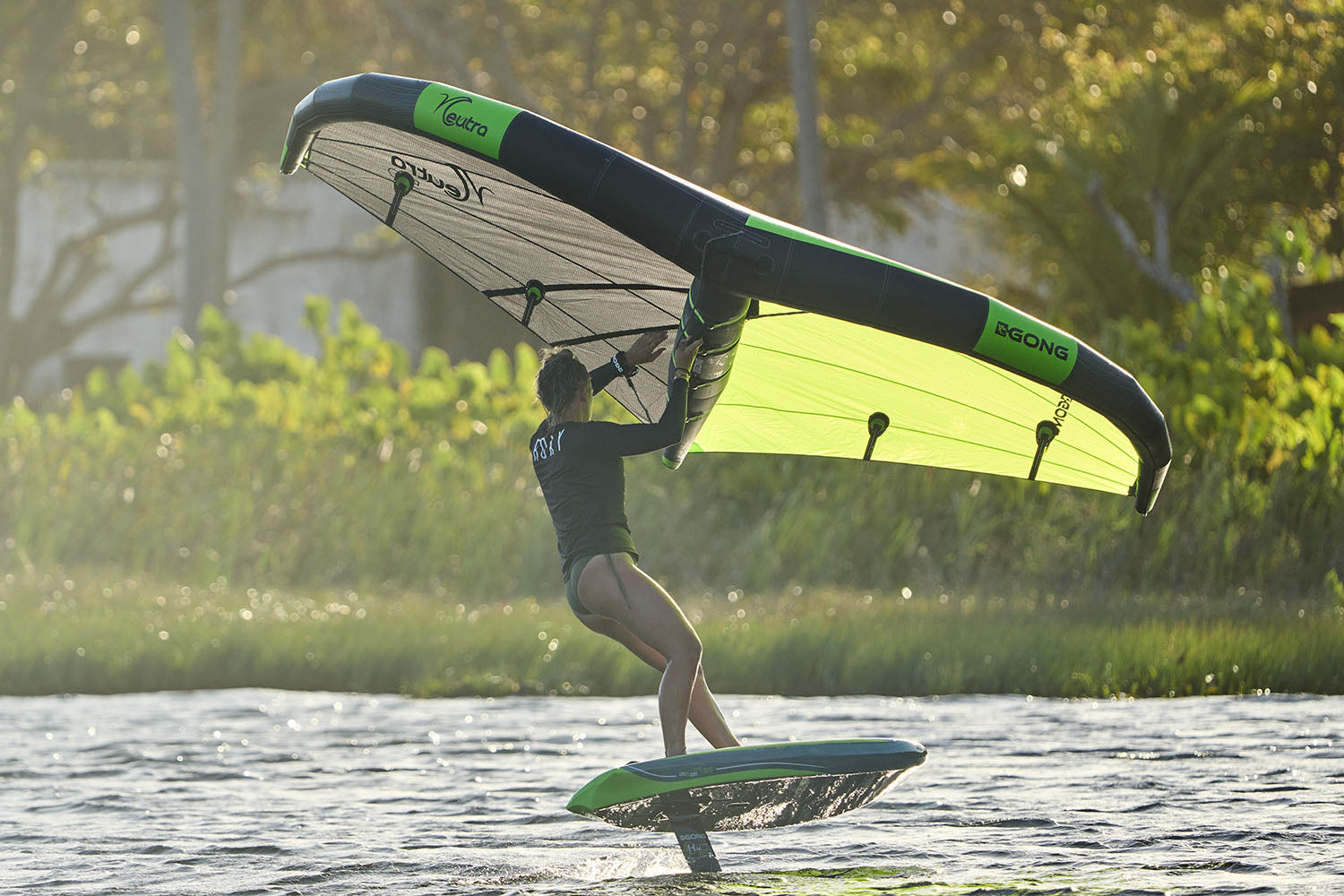
Jibing on wing foiling gear is very similar to a windsurfing or kitesurfing jibe with the difference that the Wing can be neutralized to take advantage of a swell bump for a smooth turn.
There are two main ways to jibe in Wing depending on whether you switch before (presented here below) or after passing the wind axis (presented in this specific how to).

Foreword
Even if there are many common points with windsurfing or kitesurfing, it is necessary to note some specific or more important points in wing foiling:
- The simplest is to jibe in your natural stance, goofy or regular. Depending on the tack you are on, you will either jibe to switch (this is the simplest because we attack from the front), or switch to jibe on the other side. While knowing that executing them from every possible position will be a long and complicated exercise. But soon you will know how to do all four jibes perfectly.
- The first thing to do is to look around to avoid an accident, either by looking in the window, or by moving the Wing backwards to see the trajectory in front of the leading edge, or by putting the Wing up like an umbrella.
- You should also check the wind strength and wind axis before engaging the maneuver. It is fundamental to use these elements to maximize success: waiting for the lull if you are overpowered, or the opposite, can change everything compared to a blind engagement. A little wave or chop that pushes you into the turn will be a big help.
- To switch your feet on a foil board, you have to do a little pump (an impulse) that will make the Foil go up while you have both feet in front. This will prevent you from touching the water again. The most natural way is probably to switch at the end of the maneuver and to attack facing the turn.
- The Wing goes from one tack to the other very naturally; your hands go along the handles smoothly. The only thing to avoid is to let it pass under the board by deflecting it. So, don’t make the curve too long, tighten it at the end of the move. The downwind phase should be as short as possible. This is a beginner’s fault, to block downwind because of lack of speed and engagement. Your turn should look more like a rounded L than a C. And attack with the Wing, then umbrella it before the downwind.

The keys to jibe in Wing Foil are :
Before specifically discussing the switch to jibe, also note that whatever your stance, the success of the jibe is determined by these key points:- Check what’s happening around you before the maneuver that your trajectory does not cause a collision.
- Have speed to generate downforce, which will make your jibe easier.
- Before starting your turn, you have to straighten up to go from a counter upwind heel/tilt to a downwind heel/tilt.
- To switch your feet with as much balance as possible, lay the board flat as much as possible and use the wing as an umbrella.
- Begin your turn by leaning lightly on the Wing with your back hand.
- Half way through the turn, let go of the back hand while turning the Wing to the other side of the board, and position the Wing on the opposite side always with the front hand.
- When passing downwind, switch hands on the high handle and grab the low handle with the other hand.
Switch to jibe :
It’s a slightly more complicated jibe because you turn your back to the Wing when engaging your turn, which can cause a fall before the turn, which is always more frustrating than when exiting a turn. To do a switch to jibe you have to arrive with speed; this is the only way to get out of the move in flight.Switch your stance
Ride crosswind to switch your feet. We take the foot out of the back strap to place it just in front. We straighten up and slow down a bit by raising the wing at 45°. We put a little pumping in with this foot. We can help ourselves by holding on to the Wing into the umbrella position over your head. As soon as you feel the lightness: throw the back foot in the front leeward strap. The big toe of the back foot should aim at the big toe of the front foot from the inside of the strap. This is the trick to avoid hurting your toes when shooting for the strap. When the toe of the back foot touches the toe of the front foot, it gives the toe of the back foot the top start to go where the back foot was: just in front of the back strap but slightly upwind (both feet on both sides of the central axis of the board). Your new rear foot corrects all the balance problems of the board, laterally and longitudinally to avoid touching the water. Strapless, we will place the foot 10cm further forward than the ideal placement when sailing; and shift it to windward on the toe side by 5 to 10cm depending on the radicality of the curve you are considering. The placement of the back foot influences the radicality and stability of your curve. The further back the back foot is moved, the shorter and stronger you turn, and the same goes for the center of the board when you switch. Find your personal balance.Engaging the turn
Here you are in switch with the Wing behind you and your chest turned 90° forward. Your back arm is very bent to keep the board in the initial angle. You have to keep a good speed and accelerate again if necessary before the curve. Then we’re going to come up to leeward angle by pressing on the heels. Take it easy on the angle because your weight will be pulled by the Wing’s traction and will make you start the curve. You will have to release the power of the Wing slightly as you gain leeward angle, otherwise you risk being overwhelmed by the pull of the Wing. The closer you get to the wind axis the more you will move your front hand up, making the Wing look like an umbrella.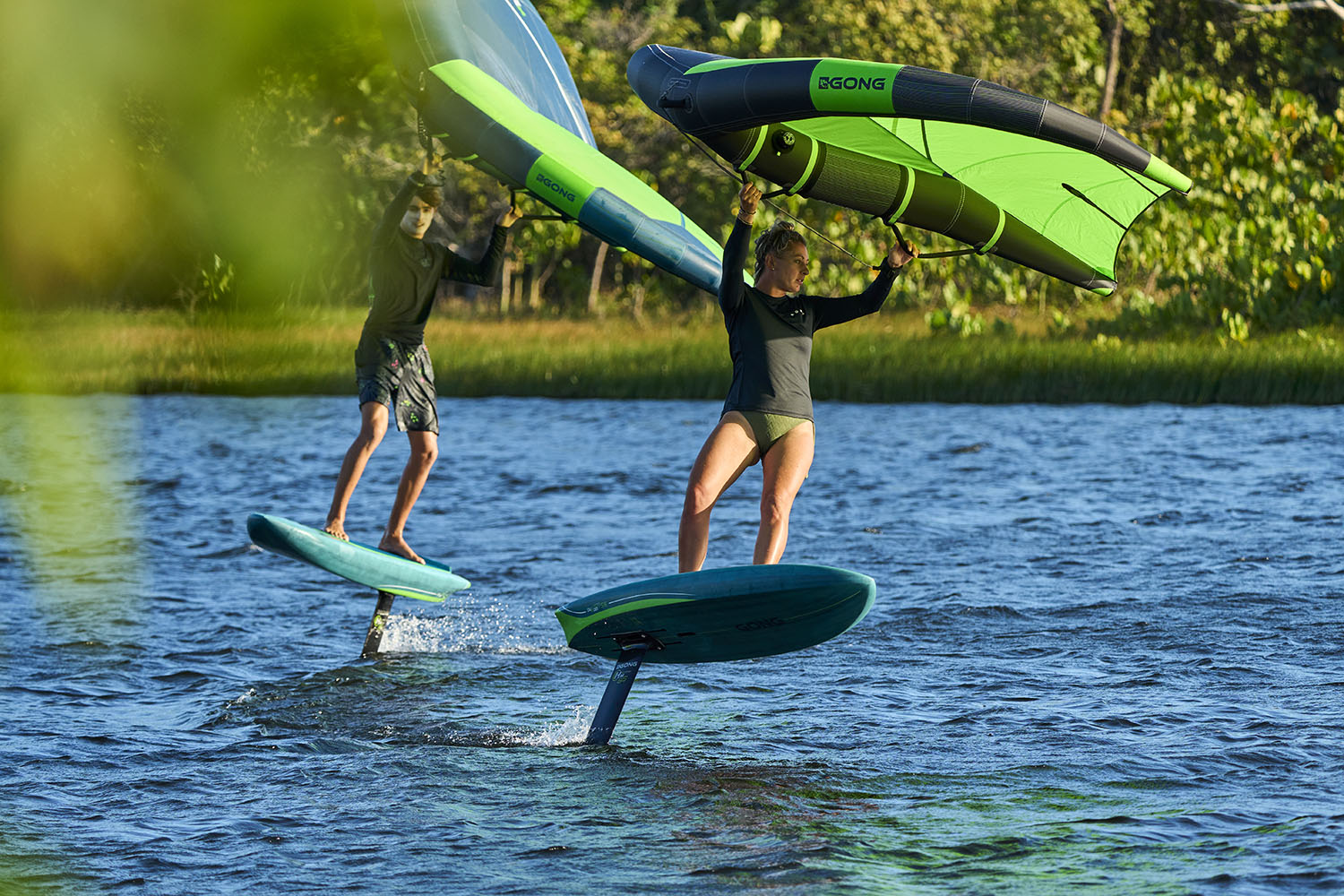
Once we start to move towards the wind axis we will try to hold the Foil in the water with a pressure on the front foot while keeping the angle of heel with the back foot. We will gradually transfer the pressure from a lift on the Wing to a support on the Foil. That is to say that you will carry yourself less with your arms and more with your legs. But as you get closer to the wind axis, you lose traction and you will have to lighten the board by sliding the Foil as much as possible. You have to be gentle so as not to create breaks and firm to accentuate the angle grip.
Crossing the axis of the wind
Arrived close to the wind axis, you have to continue the curve and prepare the change of hands. During this change, you will not have any traction from the Wing. So, all your weight will be on the Foil. If you are at this moment of the move without speed, it’s game over: you reposition and you have a good chance to lose your balance. So, the solution is to tighten the turn more and more as you get closer to the wind axis. And as soon as you let go of the Wing to change hands, you slide the Foil, mainly by dosing the supports; the time it takes to pick up the Wing again. Beginners will put too much back foot in this phase, often due to lack of speed and engagement. The other solution is to close up the turn violently but it is more complicated. So, the higher your base speed, the easier it is. And the tighter your turn, the easier it is.
When you understand this, you can see that you have plenty of time to change hands on the Wing.Switching hands
To make a nice hand change you need to organize the path of your hands: My back hand comes on the handle with my front hand. My ex front hand passes to the other side of the central strut and slides along the strut to naturally come and grab the rear handle. Usually you can take your hand off the strut, but at the beginning the ideal is really to slide your hand over the big section of the strut. You can even make up for it when you come out of the move by grabbing the strut and with your fingertips glued to the spinnaker, it works perfectly. During this phase of changing hands, you will rotate your chest facing your toes, the body returns to its normal axis, to accompany the passage of the front hand, then the back hand. The wing will then move slightly backwards from the vertical of the nose to the new leeward rail (on the toe side).Closing your turn and relaunch
The next step is to continue the turn by luffing with heel support once you have passed the wind axis and thus re-launch the Foil. This is when we will start to hang on the wing again. The hands are well in place, the curve is over, we can prepare to sheet in. This phase is much simpler when you can regain traction with the Wing or when you still have speed, but you can also use the Foil and its lift with a few pumping strokes. The key to the relaunch is to lower the front hand to put the Wing back in front of you as quickly as possible. So, the more you reduce the hang glide between your arms after the wind has passed, the faster you will go back. And if you had moved the Wing backwards just before, you can move it forwards to give it some apparent wind and restore a laminar flow on its profile, a vector for a clean and healthy traction.Back to sailing
The last phase consists of tucking and tilting the Foil into the wind to regain heel support to counter the traction of the Wing. We will lean on the heels and fix the new trajectory, taking care not to touch the water. The body will lean more and more into the wind as you tuck in. Remember to manage the power of the Wing because often you will reach the end of your initial speed and you will have to re-launch the Wing.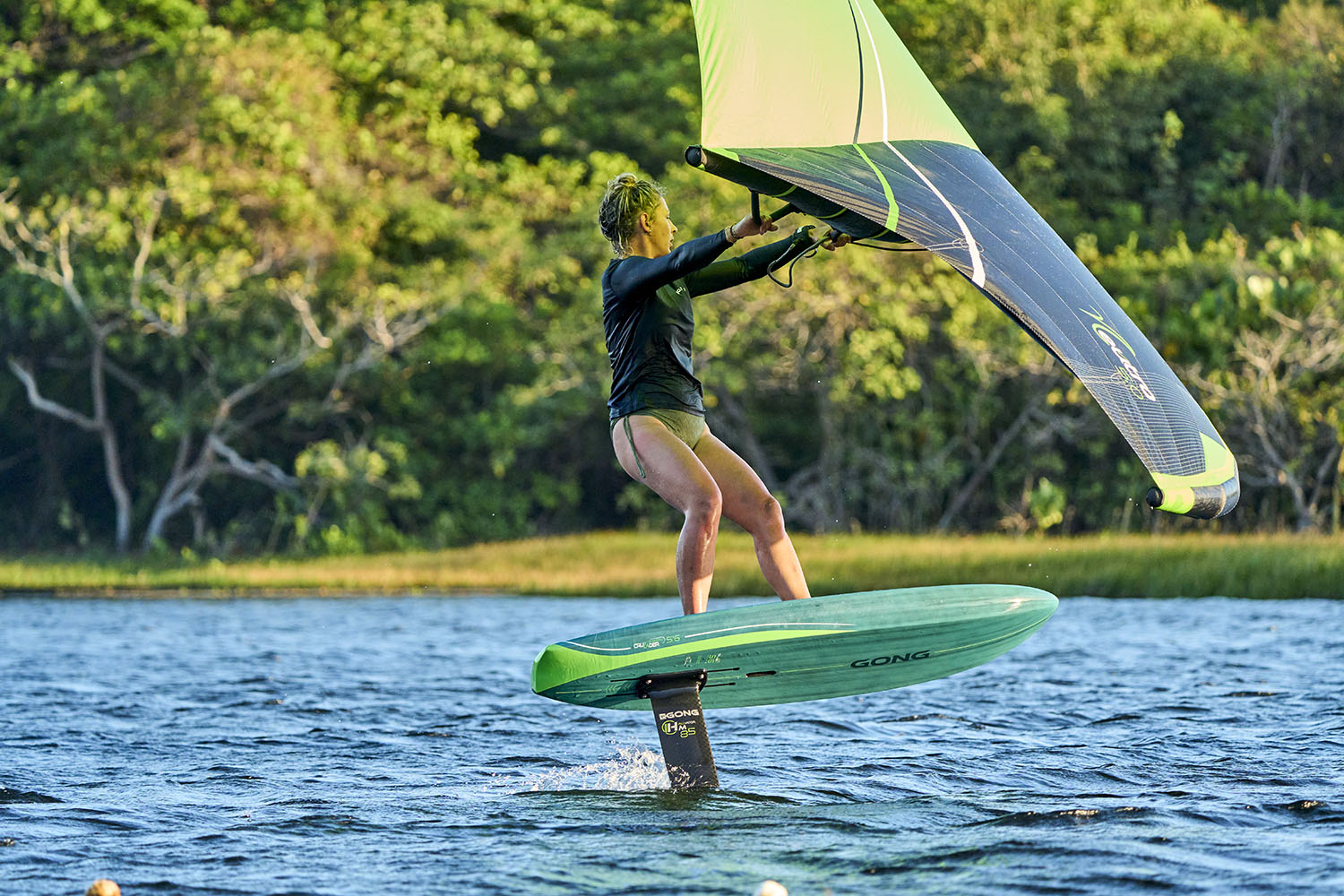
The key points of attention to a Switch to Jibe manoeuver are :
- Having speed.
- Use the swell and chop to maintain speed.
- Manage your weight transfer well.
- Have an automated and clean hand movement.
In a sequence :
- Speed.
- Switch.
- Curve.
- Release power to umbrella.
- Let slide.
- Change hands.
- Tighten the curve.
- Restart.
- Oppose.
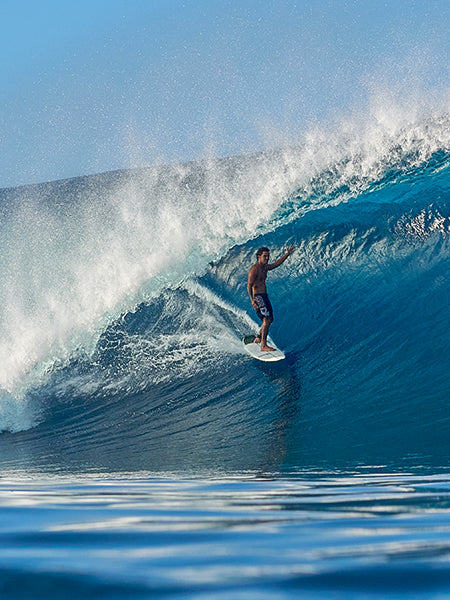
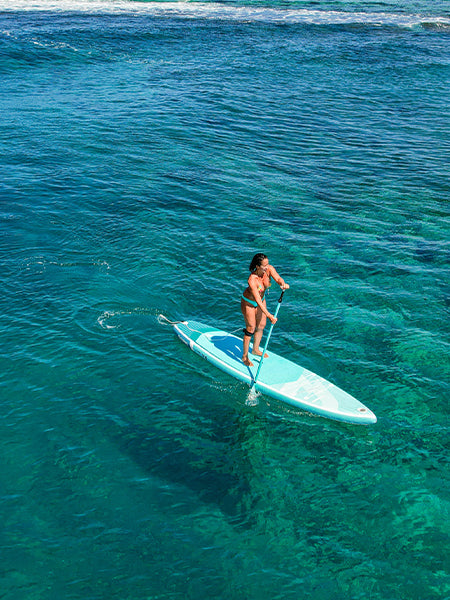

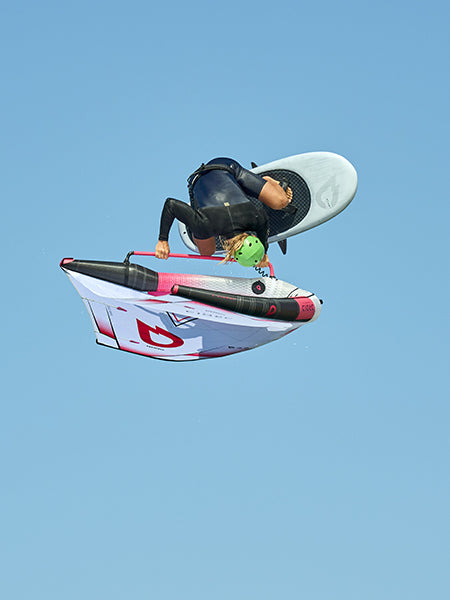


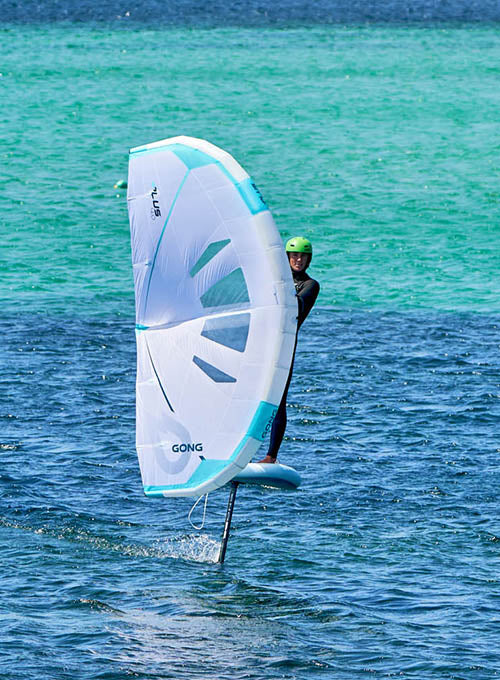



1 comment
Looks very interesting